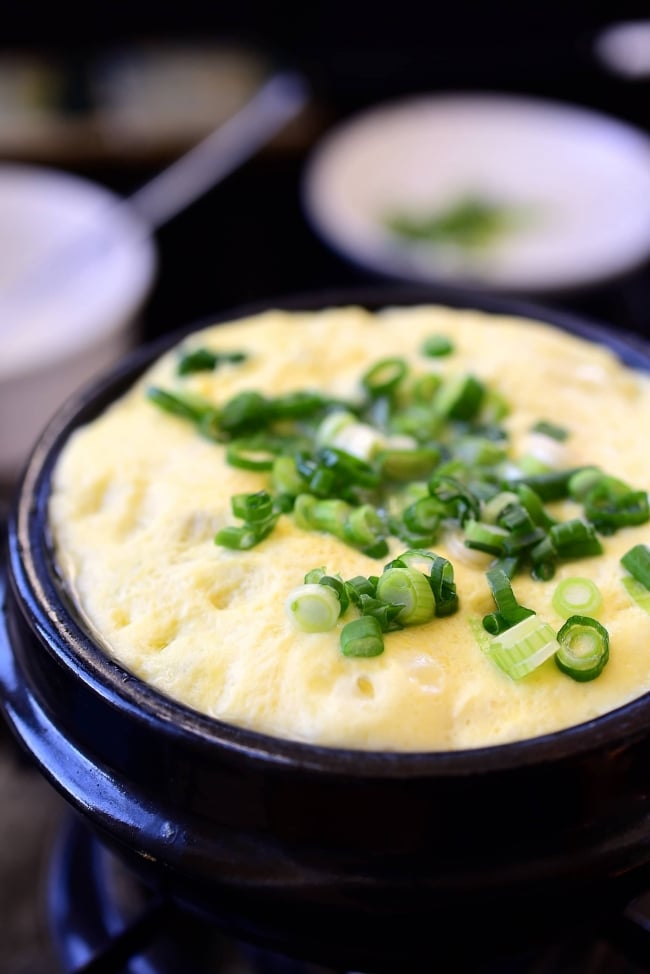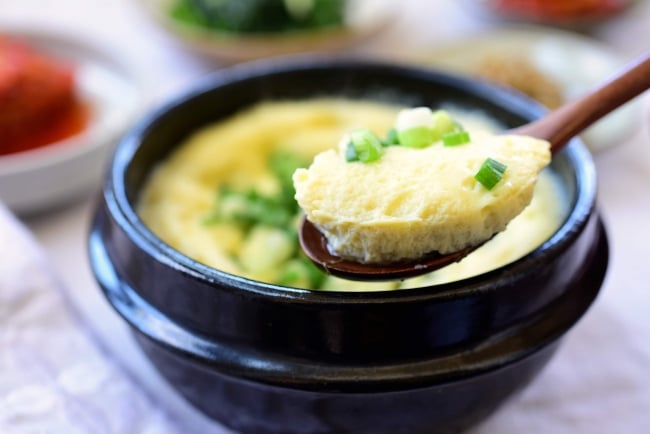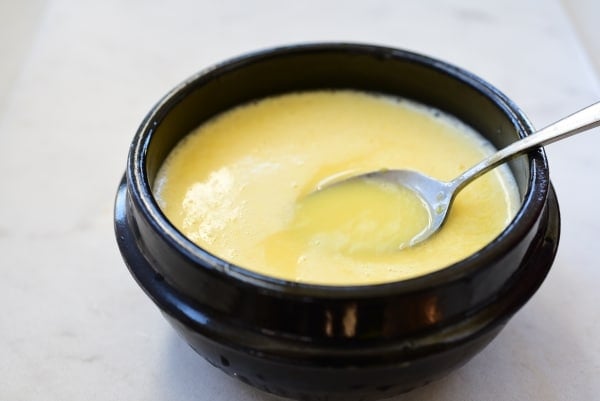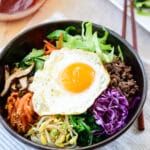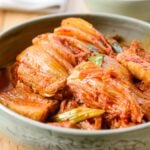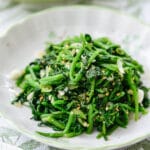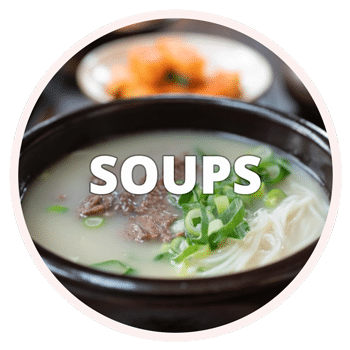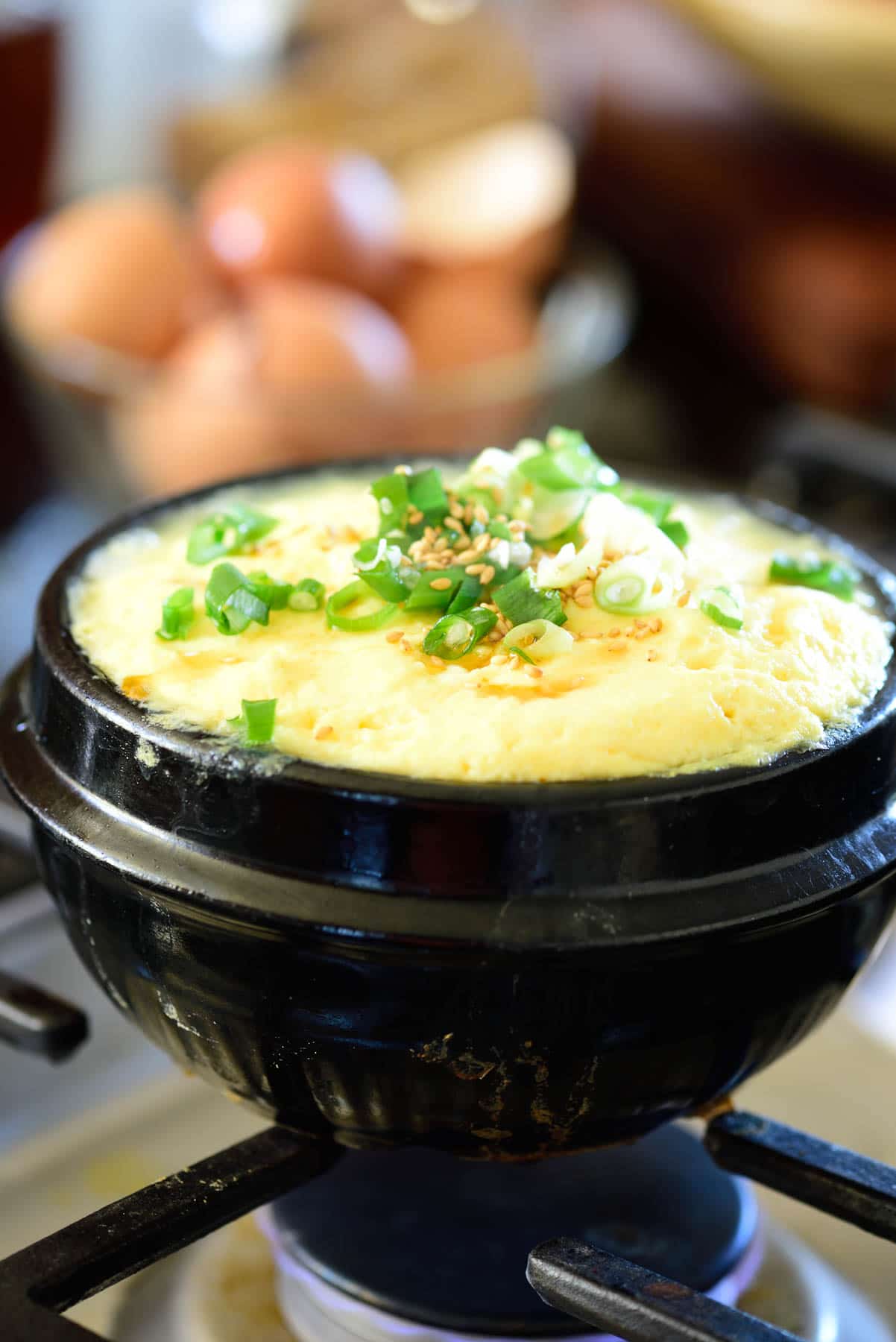
Gyeranjjim (계란찜) is a Korean savory egg custard dish. Gyeran means eggs, and jjim refers to a steamed dish. Eggs are also called dalgyal (달걀) in Korean, so this dish is also called dalgyaljjim (달걀찜). It’s a popular side dish for breakfast, lunch, and dinner both at home and restaurants. Gyeranjjim is so quick and easy to make that I often add it to a meal at the last minute.
You can make it simply with eggs and scallions, but other chopped vegetables such as carrot, onion, and/or zucchini are great additions as well. Growing up, we often had it with salted pollack roe, myungranjeot (명란젓).
In order to thin the eggs and enhance the flavor, I usually use anchovy broth. You can certainly use water or any other broth such as dashima broth or vegetable broth. For a silky, custard-like texture, I use 1/4 cup liquid for each egg. Adjust to your taste.
For the seasoning, salted shrimp (saeujeot, 새우젓) is the best with eggs. Saeujeot adds a unique savory flavor to the eggs. Fish sauce will be excellent as well, or simply season with salt.
How to steam the eggs
Gyeranjjim is usually cooked and served in a small earthenware (ttukbaegi, 뚝배기) at Korean restaurants. I also like to cook it in my earthenware directly on the stove top. But, you can use a ramekin or a heatproof bowl and place it in boiling water bath in a pot to steam. It’s also easy to cook in the microwave.
Watch How I make it
For more Korean cooking inspirations, follow along on YouTube, Pinterest, Twitter, Facebook, and Instagram.
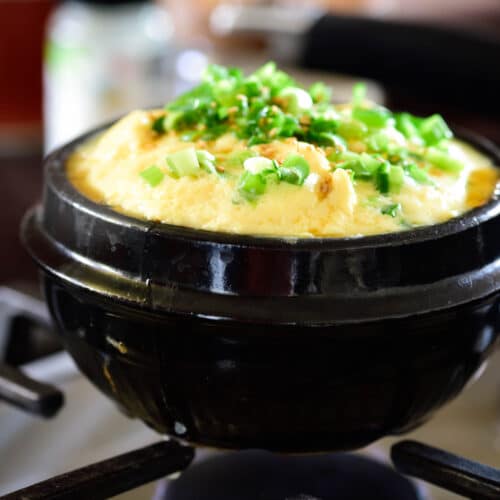
Ingredients
- 4 - 5 large eggs
- 1 cup anchovy broth (or water or dashima broth) adjust to taste
- 1.5 teaspoons salted shrimp (saeujeot) or 3/4 teaspoon salt (or fish sauce)
- 2 tablespoons chopped scallion
- 1 teaspoon sesame oil, divided - optional
- 1/2 teaspoon sesame seeds - optional
Instructions
- Beat the eggs with a spoon.
- Run the mixture through a sieve to break it down into a smooth liquid consistency. (If you skip this process, make sure to beat the eggs until very smooth.) Mix the beaten eggs well with the anchovy broth or water and salted shrimp (saeujeot), salt, or fish sauce.
- Lightly oil your pot or bowl with 1/2 teaspoon sesame oil or cooking oil. If using an earthenware, start heating it while preparing the egg mixture.
Use one of the following cooking methods depending on the cookware used:
Earthenware/ceramic pot (stove-top proof):
- Add the egg mixture to the pot. Cover, and simmer. When the eggs start to set at the bottom, stir, and reduce the heat to medium low or low (if your stove is high strength). Cover, and continue to simmer for about 5 to 7 minutes, stirring a couple of times, gently stirring the eggs in a circling motion with a spoon.
- Check the eggs, and cook longer if needed. You can add the scallion with a couple of minutes left or after the egg is done. Drizzle the optional sesame oil (about 1/2 teaspoon) and/or sesame seeds.
Stock pot:
- Bring water to a boil in a medium-sized pot. The water should come halfway up the sides of the ramekin/bowl. (Adding a folded paper towel at the bottom will prevent the ramekin/bowl from rattling while the water is boiling.)
- Carefully place the ramekin/bowl in the pot. Cover the pot and steam for 8 minutes over medium low heat. Make sure the water boils gently.
- Gently stir the eggs with a spoon. Add the scallions, cover, and steam for an additional 4 minutes or until the mixture is set.
Microwave
- Place the bowl with the egg mixture in the microwave. Don't need to cover it. Cook for 2 minutes, and stir. Cook for another 2 minutes, and stir. Check to see if the egg is still runny in the middle, and cook for another minute or until the egg is set in the middle.
In this post, I’ve updated my gyeranjjim recipe, which was originally posted in March 2010, with more information, new photos and an improved recipe.


